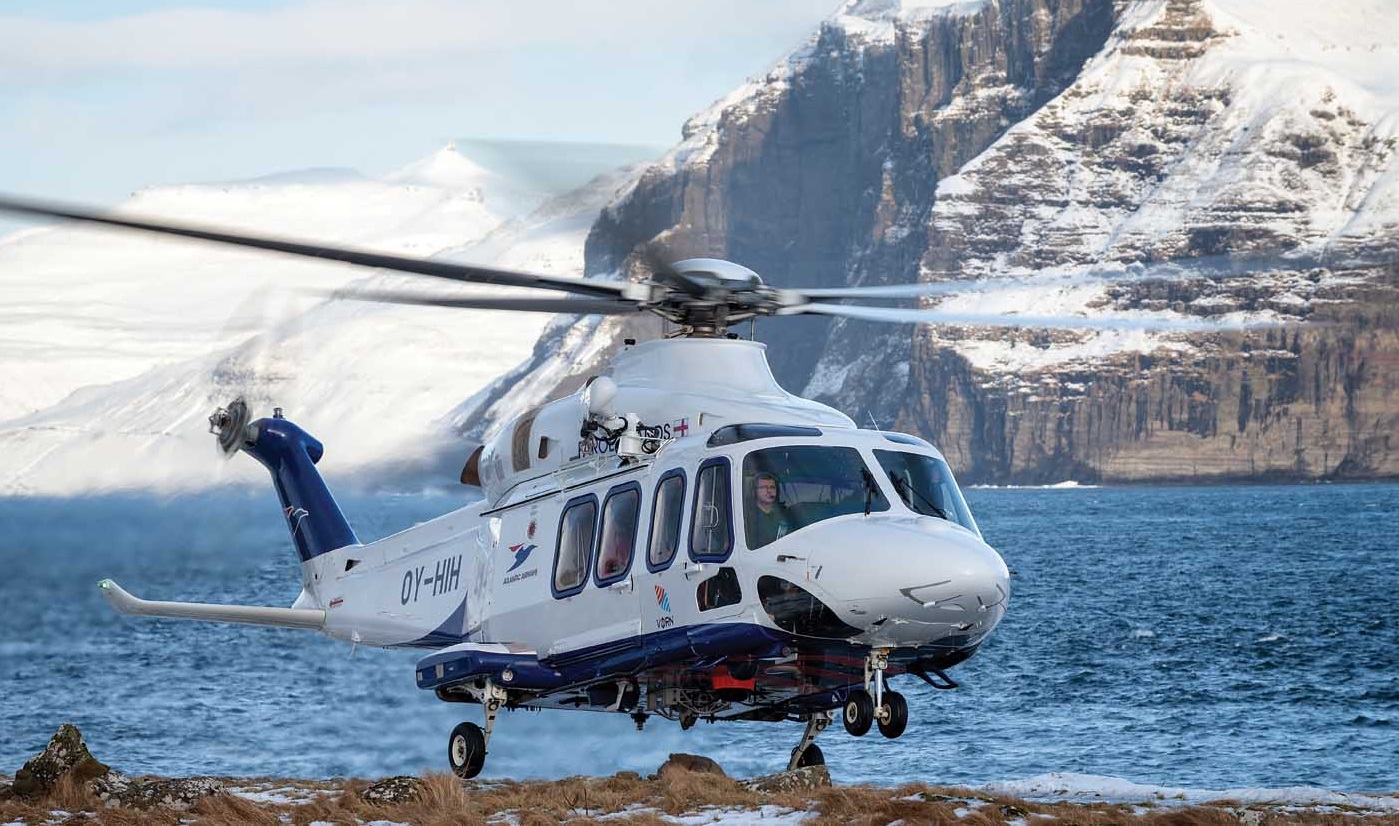Just south of the Arctic Circle and almost equidistant between the U.K., Norway and Iceland, the Faroe Islands nevertheless maintains a temperate climate as a result of its position at the end of the Gulf Stream. Although the archipelago of over 700 islands and outcrops is a self-governing country administrated by Denmark, there are more than 250 miles (400 kilometers) of Atlantic Ocean to cross before reaching anything that might be called a mainland.
There are few better examples of the characteristic self-reliance of the Faroese than the fact that they maintain not only their own airline, but also an island-hopping helicopter service and 24-hour search-and-rescue (SAR) and helicopter emergency medical service. It is unusual for small territories to maintain such technically complex and financially burdensome state infrastructure. It is more unusual still that these organizations are all provided by a single company. Self-reliance evidently goes hand in hand with versatility.
Atlantic Airways has operated a domestic airline connecting the Faroes to mainland Europe since 1987, but a national recession kept it from becoming profitable until the mid-1990s. In 1994, SL Helicopters, which had operated a commercial public service with one Bell 212 aircraft, was incorporated into Atlantic Airways. Pilot Hans Erik Jakobsen joined the company in the same year and is now the manager of helicopter operations.

Until this time, SAR cover for the islands had been provided by the Danish coast guard. Operating at long range, this was far from an ideal situation. “During the ’90s, we realized that we really needed a SAR helicopter,” Jakobsen said. “We started out with one Bell 212, and then in 2000 we gained a Faroes government contract which allowed us to purchase a [Bell] 412, which with four-axis automation was a major advance.”
In 2015, a further contract was secured that consolidated the island-hopping service with the SAR service, as Jakobsen explained. “This gave us the necessary economics to purchase two [Leonardo] AW139s with the seven-tonne gross weight kit.”
In common with all of Atlantic Airways’ other aircraft, these machines were named after significant Faroese citizens. Both helicopters took the names of artists — Sámal Joensen-Mikines and Ruth Smith Nielsen — and are based at Vágar Airport, on the westernmost major island of the same name.
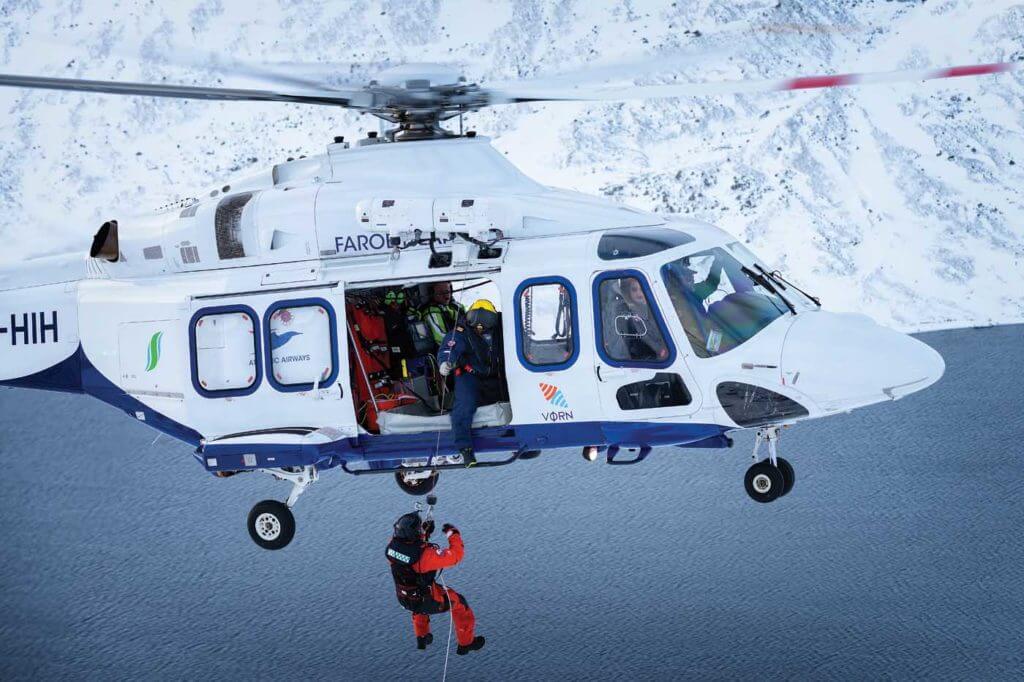
Without a large metropolitan population to finance their upkeep, the two aircraft must deliver maximum utility in the most efficient manner possible, and this means turning their hand to a multitude of tasks. The island-hopping shuttle service provides the majority of trade for the aircraft in their domestic role, but they are also used for survey flying and sling-loading.
Flexible working
This small but extremely diverse operation demands not only a multi-purpose aircraft but also a multi-purpose crew. Rescuers are all qualified both as rescue swimmers and hoist operators, with individual roles being decided prior to each shift. Three of the company’s six rescuers are drawn from its cadre of maintenance personnel, with the other half being from the ground-handling team. David Sand Davidsen joined the company as an engineering apprentice, and was quickly offered a position to train as a rescue swimmer.
“I like a challenge, and have always been interested in helping people, so it seemed like the perfect opportunity,” he explained. “And my situation was a little bit special as I got to train as a rescue swimmer while I was still an apprentice.”
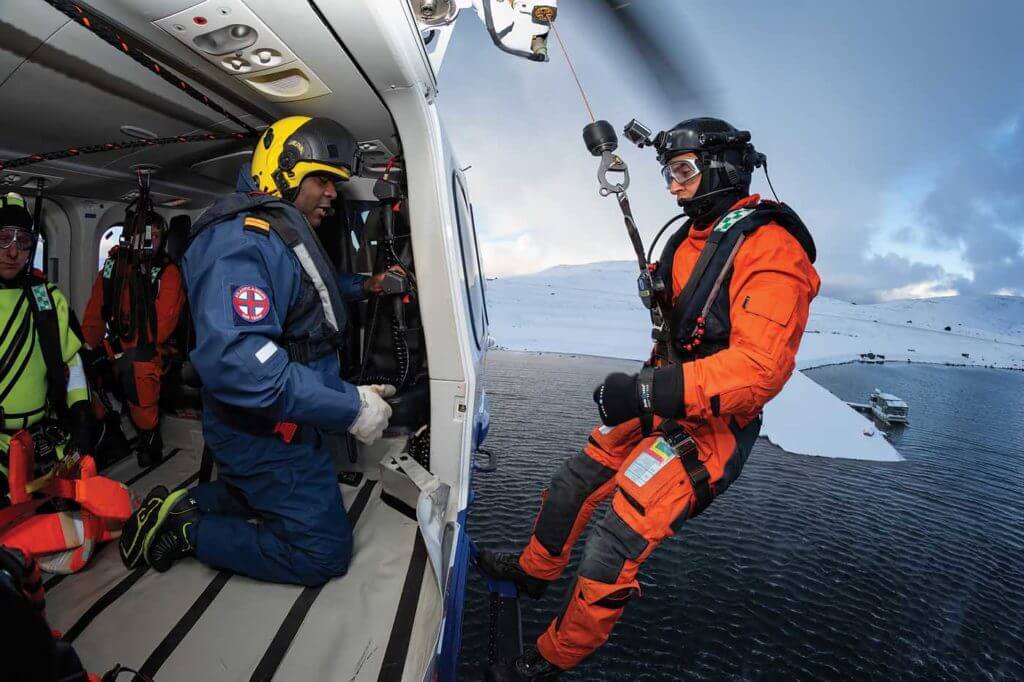
Having started with the company in September 2013, by November of the same year Davidsen found himself undertaking the additional training to become a rescue swimmer.
“I was in Denmark for three-month periods, twice each year for three years, as well as rescue swimmer school in Norway. There was a lot of school going on and it was a pretty heavy workload with the medical training as well. It was a little more challenging than usual, but I managed!”
The engineer apprenticeship program lasts for approximately four years. For rescue swimmer training, medical theory alone takes approximately a year, then it’s a year of training on the job. “We try to train new rescue swimmers in the aircraft as the best way to learn is to do the job,” Davidsen said.
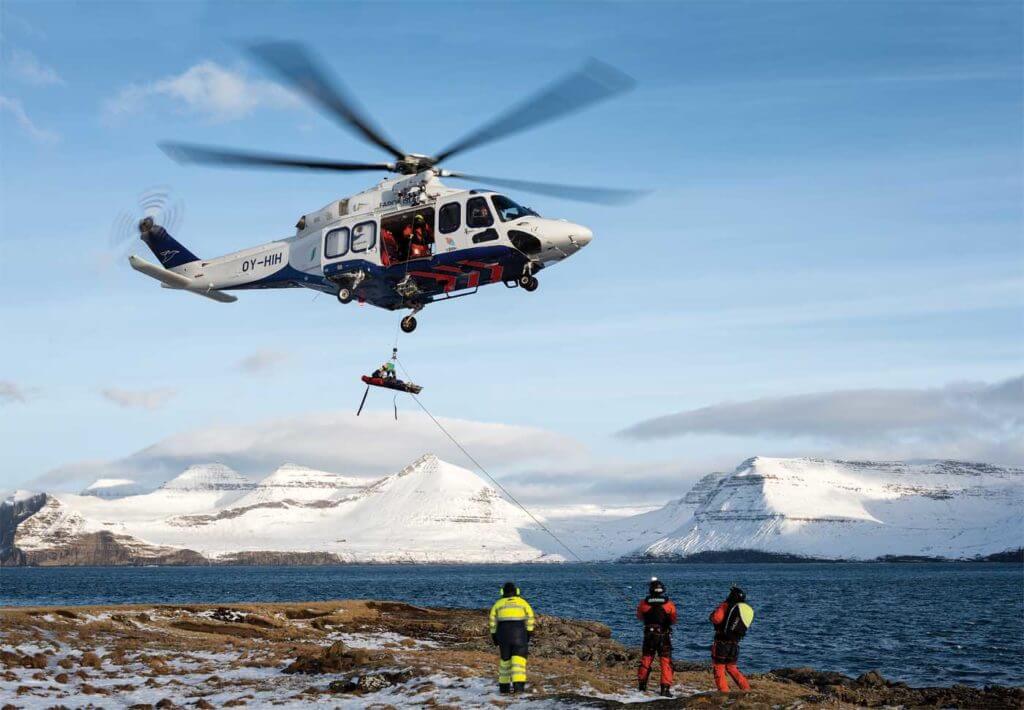
Rescuers who are also technicians will usually conduct maintenance on the helicopters, to get a better understanding of the helicopter and its systems. “Because we don’t have a rescue swimmer that is fully licensed on the helicopter at the moment, a fully licensed technician is accompanied with the rescue swimmer for the maintenance of the helicopter,” Davidsen said.
Pilots are also expected to be versatile in their role, Jakobsen noted. “On a daily basis we are busy with the island-hopping flights, but of course the SAR and EMS flights fluctuate depending on the season. We could have 10 call-outs in a week or almost nothing for a month,” he said. “Around 60 percent of our emergency jobs are EMS, that is the transfer of patients between hospitals. The rest are split equally between rescues from ships — some quite far out at sea — and people injured or in distress in the mountains.”
An aircraft for all environments
Jakobsen is very happy with the choice of AW139 for such a multi-role environment. In a previous job he was invited to consult on specifications for a SAR helicopter, and identified some features of the Leonardo design as being particularly noteworthy.
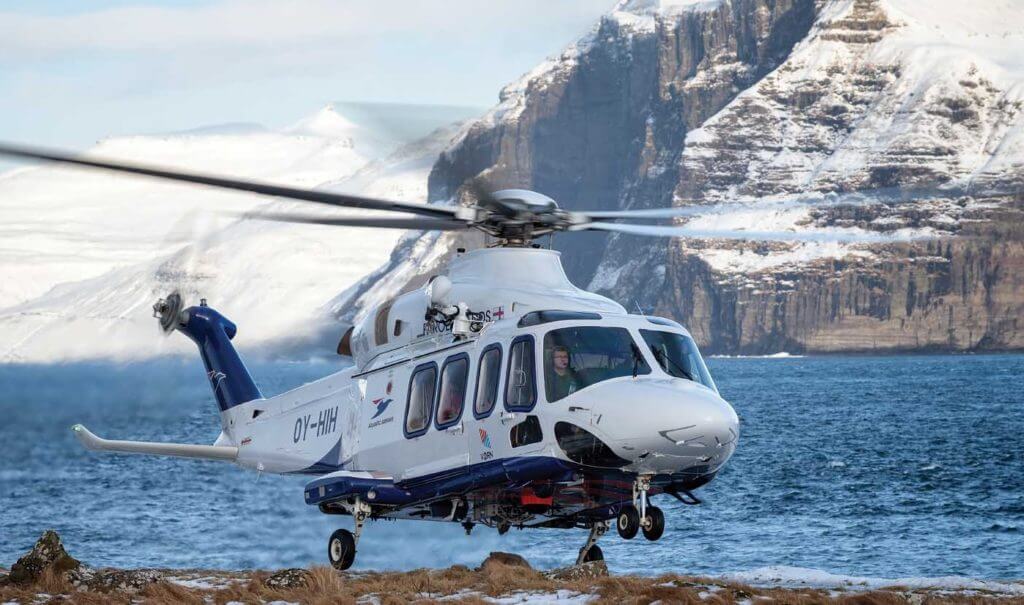
“The 139 is a major upgrade from the 412. Having a full glass cockpit and the avionics give us automatic search patterns and an excellent autopilot, which reduces the pilot’s workload significantly,” he said, adding that the physical properties were just as important. “It has a large, square cabin, dual hoists, and is FLIR [forward looking infrared]-equipped with almost no performance loss.
“The AW139 is an amazing helicopter. It flies like a fixed-wing in forward flight, and is very stable and easy to fly, even in turbulence, but is versatile enough to do all the tasks that we need it to do here in the Faroe Islands.”
The FLIR image can be viewed in the cockpit on the fifth screen, and the SAR interior is easily fitted or removed, a huge benefit for an operation that may require a rapid reconfiguration of the aircraft after a passenger flight. While the company operates two helicopters to maintain its 24/7 SAR commitment as well as its utility and public transport operations, both tasks are fulfilled by a single airframe when one is in maintenance. According to Jakobsen, the aircraft can be reconfigured to SAR role fit within 15 minutes.

“The search-and-rescue operations put some interesting constraints on the company because we have to have the crew numbers to support a 24/7 operation,” he said. “Even though our island-hopping role is only six hours per day for four days a week.”
If a rescue occurs at night or while the crew are away from the airfield, the Maritime Rescue Coordination Centre (MRCC) will call the captain and “Rescuer 1” — the rescue crewmember who lives farthest from the hangar. These crewmembers will then alert the second rescue crewman and the first officer.
Davidsen explained the pre-mission protocol: “We brief on the way, and if anybody feels uncomfortable with the level of risk, we can discuss it as a crew,” he said. “Of course, the captain has final responsibility for the aircraft and the crew, but we are a team so decisions are made together.”

Those decisions revolve largely around the weather, and the severe hazards that the unpredictable and often violent northern Atlantic climate can inflict on such an exposed land mass. Island weather the world over depends upon air mass and direction, and on the Faroes it is notoriously changeable, even between islands.
“The challenging thing is the weather,” said Jakobsen. “We can have sunshine here but a few islands to the south or north it might be foggy or very windy.”
Being able to read the weather and understand what constraints it will impose on the mission is a skill necessary for any aviator, but predicting how those conditions will change demands not only sound meteorological knowledge but also familiarity with the local area. In an island environment particularly, it is all too easy to put one’s self in a position from which the weather will make it impossible to escape by the time a rescue has been effected.
Predicting dangerous weather phenomena on the Faroe Islands is even more difficult given the lack of forecasting infrastructure, as Jakobsen explained.
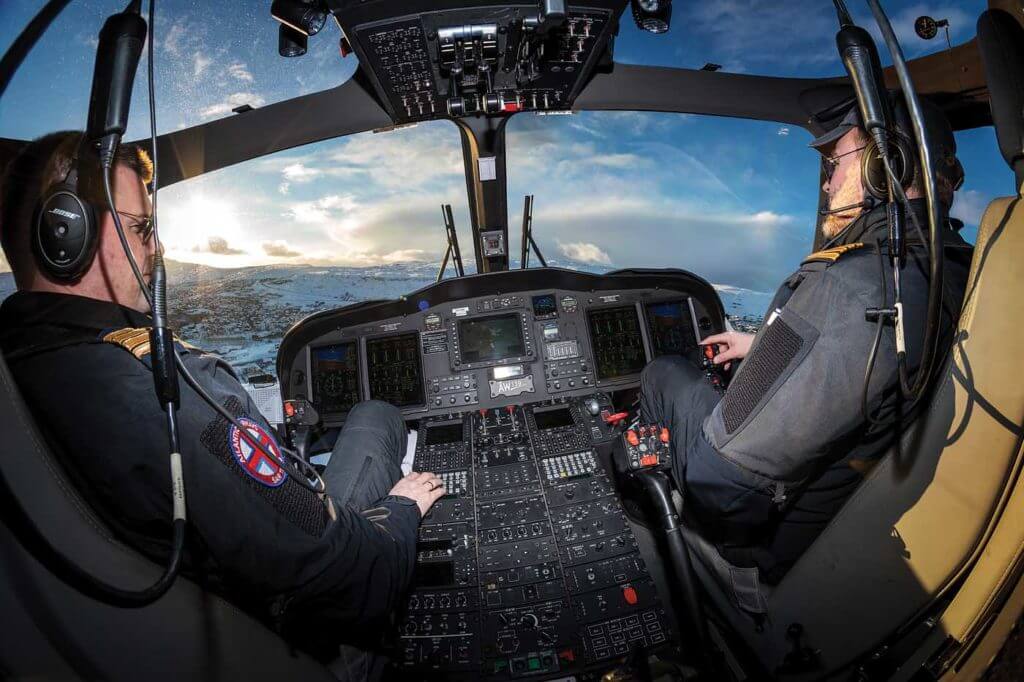
“Until Atlantic Airways bought a weather radar recently, we didn’t have one on the Islands,” he said. “Now we can see what the weather is doing moment by moment, and this is a major improvement because the weather is ever-changing here. That is what requires the most experience.”
The crew’s ‘third medic’
With the weather catered for and the rescue under way, the Atlantic Airways aircraft carry all the equipment necessary to locate and recover a casualty in both maritime and onshore environments, as well as being equipped to monitor and stabilize them once on board.
The company’s rescue crews were the first customer of Lite Flite’s Quick Release Box Mk5, a highly corrosion-resistant method of safely connecting the crewman to the hoist cable, while giving them the capability to detach rapidly should safety or the situation demand it. Pairing with their existing flight harness, it is designed to guarantee safe separation, even under tension of up to 330 pounds (150 kilograms).

Once the casualty is on board, a Physio-Control LifePak 15 monitor and defibrillator is used to supervise vital signs, and a LUCAS chest compression device is also carried. Cardio-pulmonary resuscitation is a largely mechanical activity that is not only extremely fatiguing but occupies a member of the crew that might otherwise be better utilized.
“The LUCAS machine is like the third medic on board,” said Davidsen. “It will automatically do chest compressions, which increases our capacity to complete other essential tasks.”
Rescue crews are provided with 120 hours of advanced medical training per year, conducted in six modules.
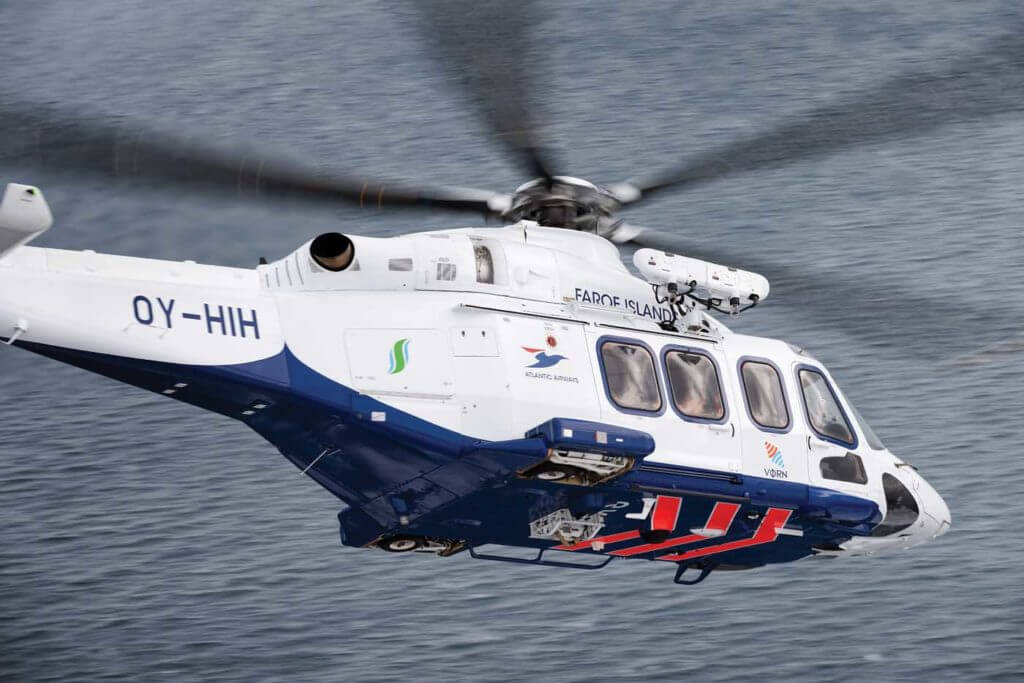
“We do have different courses that we have to complete to continue flying,” Davidsen explained. “We also have a doctor that trains us on pharmacology twice a year. An inspector from Norway will also visit each year to make sure we are up to date with best rescue practices.
“There’s a lot of training of course; as well as the rescue swimmer training there is a medical element that is a year of theory, and then a year to build the experience necessary to treat patients on your own.”
Simulator training and technical training is done in house under the Atlantic Airways approved training organization.

“Because we only are seven pilots we had some difficulties obtaining reliable simulator slots from established simulator operators,” Jakobsen said. “Because most of our pilots previously worked for Gulf Helicopters, we decided to approach Gulf Helicopters with a request for a long-term simulator dry lease, which has been a success for many years now.”
Both Jakobsen and Davidsen relish the challenges their roles provide them with, as well as the atmosphere in which they work.
“There is also a lot of variety in the operation, which presents interesting and exciting challenges,” said Jakobsen. “I have worked abroad a lot, but I’ve never had this level of variety. Here you are able to do a lot of jobs for one organization. From the perspective of a helicopter pilot, this is very desirable.”

For Davidsen, it is the physical nature of the job that motivates him. “What I enjoy most about the job is of course helping people and the challenge. It’s interesting and it does get the adrenaline pumping!”
The art of survival
The mindset necessary to survive on a remote archipelago has ingrained itself in Faroese culture. The success of Atlantic Airways has been due not only to an ability to understand the long-term benefits that aviation can bring to the small nation, but also to the creativity and versatility to make success possible.
The company offers a lifeline, at a very individual level, to those in peril. Beyond that it connects communities through its shuttle service, provides employment in technical jobs, and links the islands to the outside world. No person or piece of equipment has a single purpose. Versatility and resilience are built into the fabric of its operation. Having been safeguarded from financial ruin in its early years by the collective sacrifice of the community it now serves, Atlantic Airways exemplifies the survival spirit that rests in the heart of the Faroe Islands.






